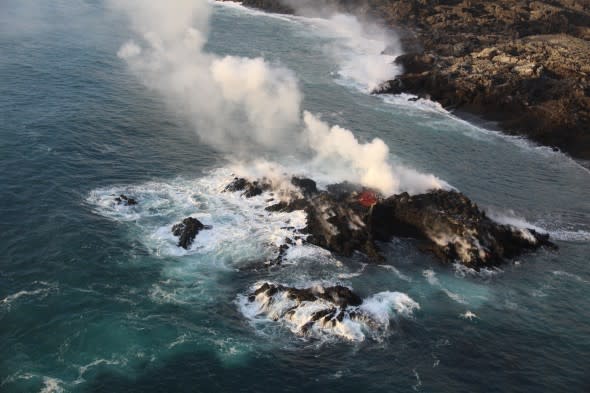Photo: Kīlauea volcano's lava forms new land off Hawaii's coast
The ongoing Kīlauea volcano eruptions in Hawaii have led to the formation of a tiny, new piece of land made of lava on the Fissure 8 ocean entry's northernmost part, according to the United States Geological Survey's Hawaii Volcano Observatory (HVO).
The HVO announced on Friday that during a morning overflight, its field crew observed that the land formation oozed lava similar to the lava that oozed from the broad flow front along the coastline.

(Photo/U.S. Geological Survey)
The land formation, which was initially considered to be an island, is estimated to be a few meters off the shore and about 6-9 meters (20-30 feet) in diameter, the HVO reported.
"It's most likely part of the Fissure 8 flow that's entering the ocean and possibly a submarine tumulus that built up underwater and emerged above sea level," said HVO scientists.
A tumulus is formed when the upward pressure of slow-moving molten lava within a flow swells or pushes the overlying crust upward, according to the Volcano Hazards Program. The surfaces of basaltic lava flows on flat or gentle slopes often exhibit elliptical, domed structures that are known as tumuli.
USGS Volcanoes tweeted on Sunday that the formation has been connected to the main flow front by a strip of lava, so scientists no longer consider it to be an island.
It has been reported that more than a mile of new land has been created from the Kīlauea volcano's lava flowing into Kapoho Bay, according to USGS officials.
